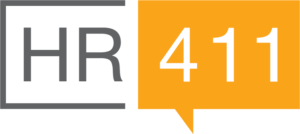Stirring the Pot: Lessons in Workplace Retaliation from Chipotle
Workplace retaliation remains a significant concern in today’s professional landscape, often hindering employees from exercising their rights without fear of retribution. Recently, Chipotle Mexican Grill agreed to a $2.9 million settlement to resolve allegations of workplace retaliation involving shift changes and sick time regulations in its Seattle locations. This case serves as a crucial example of why HR professionals must stay vigilant and proactive in preventing and addressing workplace retaliation.
Understanding Retaliation in the Workplace
When engaging in the workplace, employees have certain expectations. They anticipate fair treatment, proper compensation, and an overall productive experience as they contribute to the team. However, not every employee enjoys this kind of positive environment. Whether it’s due to poor management or systemic issues, some employees encounter unfair treatment at work. In such cases, these employees may need to exercise their rights to ensure they are treated fairly. Unfortunately, this can expose them to the risk of workplace retaliation.
Forms of Workplace Retaliation
Workplace retaliation can manifest in various ways. Here are some common examples:
- Demotion or Unwanted Transfers: A sudden reduction in job rank or responsibilities or being moved to a different role or location without consent.
- Schedule Changes/Reduction in Hours: Unwanted adjustments to work schedules or reduced hours.
- Hostile Work Environment: Creating an intimidating or uncomfortable workplace.
- Reducing or Withholding Pay: Unjust pay cuts or delays.
- Heightened Surveillance: Excessive monitoring of an employee’s work activities.
Despite workplace retaliation being illegal, HR managers must be prepared to address any allegations that may arise. Although tackling these situations can be challenging, addressing them professionally and in compliance with the law benefits the HR team and the company.
Case Study – Chipotle’s Settlement
A notable example of workplace retaliation involves Chipotle Mexican Grill, which recently settled allegations of violating shift changes and sick time regulations. In this case, Chipotle faced accusations of:
- Retaliation against Employees for Exercising Rights: This included retaliating against an employee for calling out sick, and also retaliation toward an employee who declined to work shifts changed with less than 14 days’ notice.
- Violating Seattle’s Secure Scheduling Ordinance: Employers are required to publish work schedules at least 14 days ahead of time and must honor employees’ rights to refuse any additional hours that weren’t part of the original schedule.
- Retaliating Against an Employee for Having a Second Job: An employee requested not to be scheduled at specific times due to a second job, leading to alleged retaliation.
These accusations culminated in Chipotle agreeing to a settlement of $2.9 million, distributed among 1,853 employees in Seattle. Additionally, Chipotle will pay $7,300 to the City of Seattle.
It is worth noting that instances of retaliation may not always indicate that the entire company is malicious. Sometimes, it can be a few leaders making poor decisions. Nonetheless, even one instance of retaliation can damage the company’s reputation and require significant remediation efforts.
Key Practices to Prevent Retaliation
To create a fair workplace environment and prevent retaliation, HR professionals should consider implementing the following key practices:
Clear Policies and Training
- Establish company policies on retaliation, ensuring they are clear, well-communicated, and understood by all employees. Offer regular training to management on fair practices and compliance with labor laws.
Confidential Reporting Mechanisms
- Implement confidential systems that allow employees to report workplace issues or retaliation without fear of retribution. These mechanisms should be easily accessible and trusted.
Prompt Investigation and Action
- Develop a structured process for investigating claims of retaliation and take prompt action to address any violations. Swift responses send a message that retaliation will not be tolerated.
Secure Scheduling and Fair Compensation
- Adopt scheduling practices that respect employees’ work-life balance and comply with state and federal laws. Ensure fair compensation for additional hours or shift changes.
Open Communication and Employee Involvement
- Encourage open communication among HR, management, and employees. Involve staff in policy development and decision-making processes to foster a sense of inclusion and trust.
By implementing these practices, HR professionals can create a workplace that not only avoids retaliation but also promotes a positive and supportive culture, where employees feel valued and respected.
Committing to a Culture of Safety
The Chipotle case underscores the importance of HR professionals taking proactive measures to prevent retaliation and ensure compliance with labor regulations. By implementing the strategies discussed, HR can effectively prevent retaliation and create a safer workplace. This not only benefits employees but also contributes to a healthier, more productive workplace for all.


















